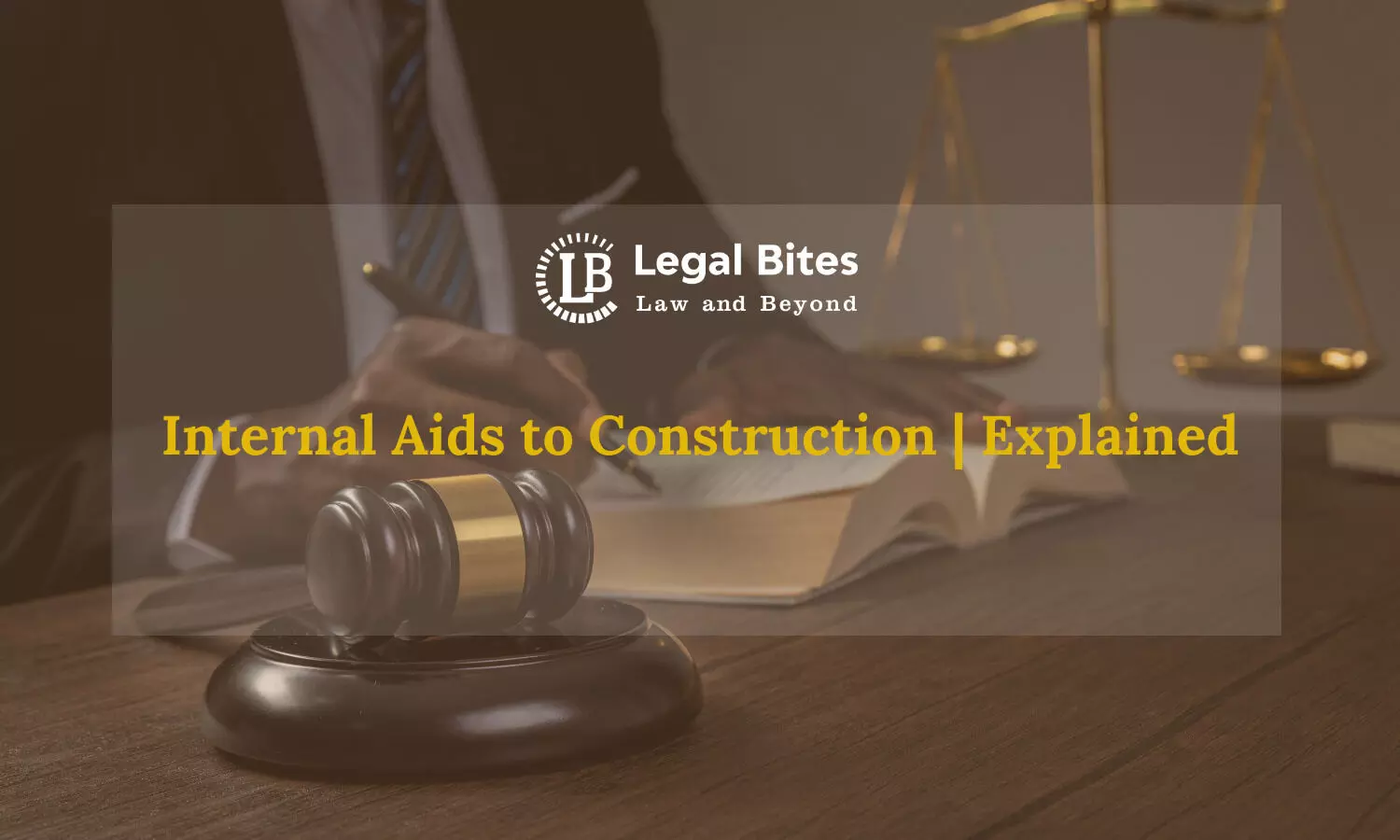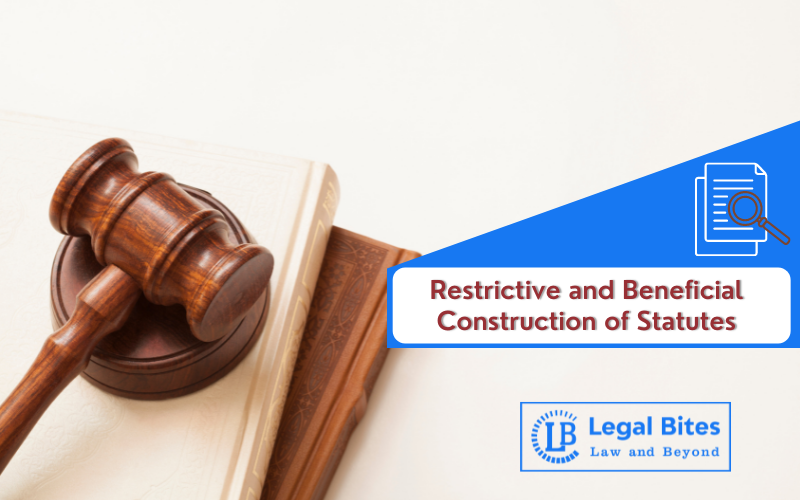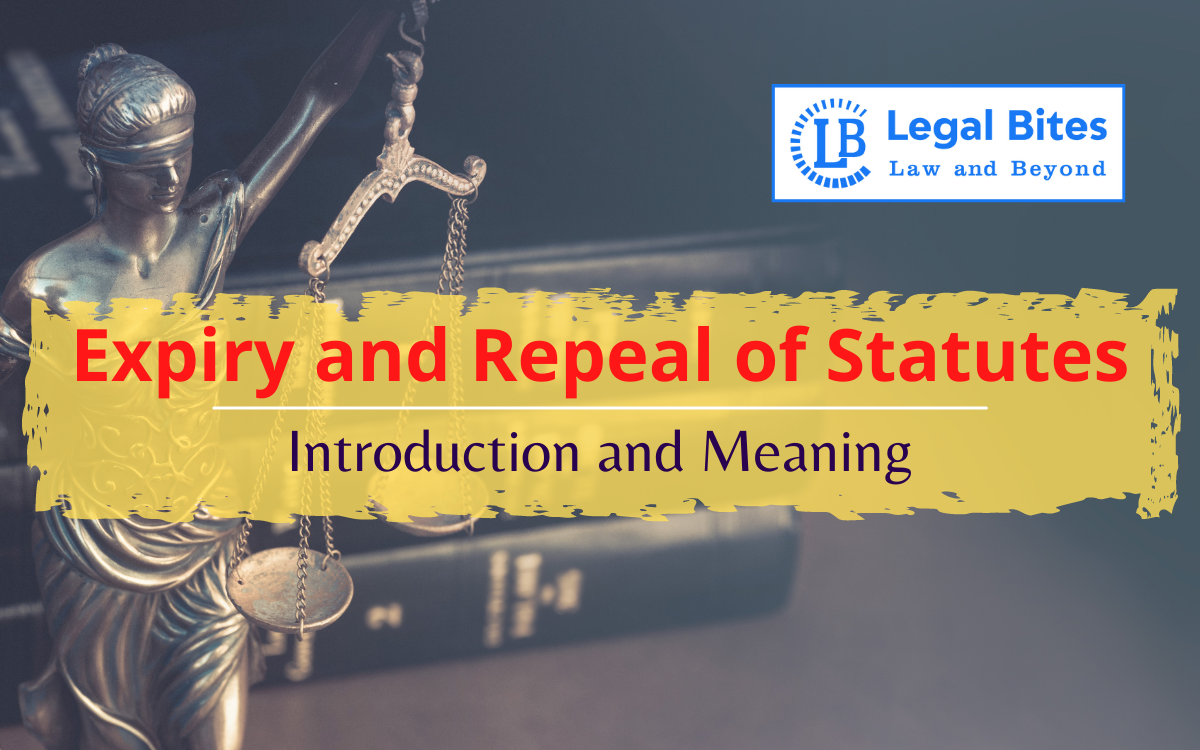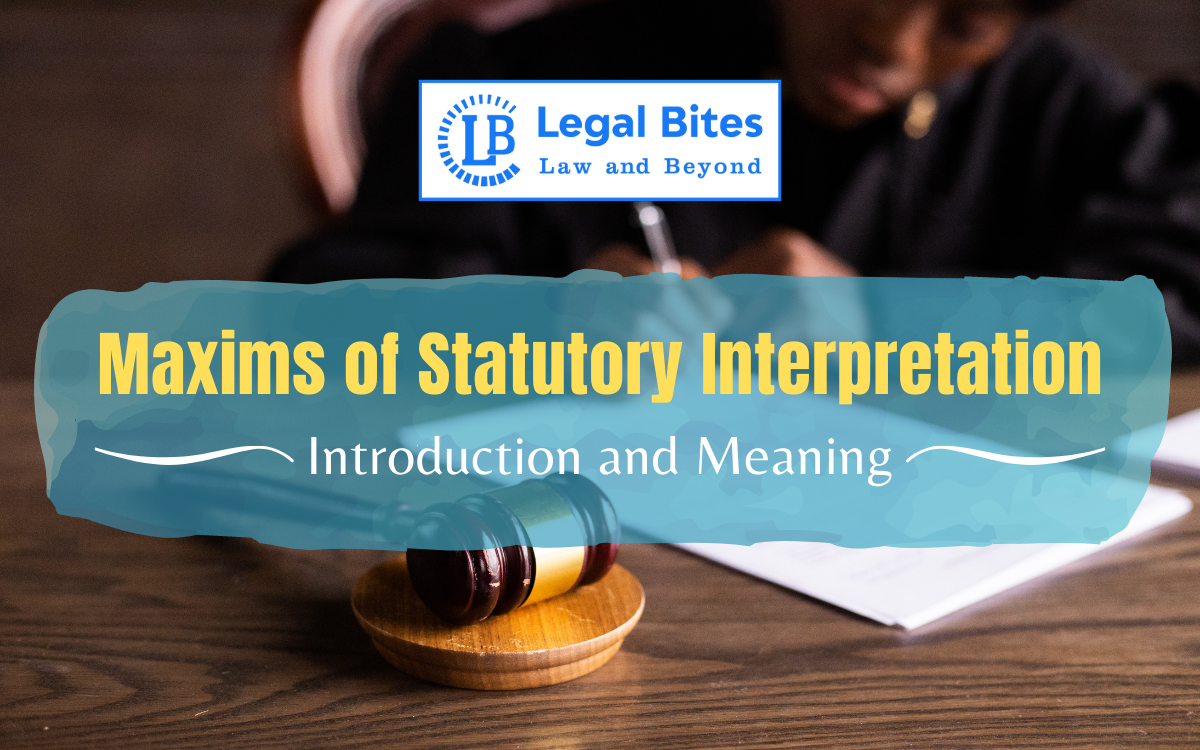Internal Aids to Construction | Explained
Laws enacted by the legislatures are interpreted by the judiciary using internal aids to construction and external aids.;

Interpretation of statutes is a fundamental process in legal analysis and judicial decision-making. It involves the process of ascertaining the true meaning of legislative provisions to apply them accurately to specific cases. Statutory interpretation is essential because the language used in statutes is not always clear, and ambiguity, vagueness, or inconsistencies may arise. To resolve such issues, courts rely on various aids to construction—classified as internal aids and...
Interpretation of statutes is a fundamental process in legal analysis and judicial decision-making. It involves the process of ascertaining the true meaning of legislative provisions to apply them accurately to specific cases. Statutory interpretation is essential because the language used in statutes is not always clear, and ambiguity, vagueness, or inconsistencies may arise. To resolve such issues, courts rely on various aids to construction—classified as internal aids and external aids.
This article explores the various internal aids to construction, their significance, and how courts use them to interpret statutes.
What are Internal Aids to Construction?
Internal aids to construction are the materials and elements within the statute itself that provide clarity and guidance for interpreting its provisions. The assumption behind using internal aids is that the legislature’s intent is primarily reflected in the language and structure of the statute. Therefore, the court must examine the statute as a whole, including its preamble, headings, definitions, marginal notes, punctuation, illustrations, and explanations to ascertain the true meaning.
Internal aids to construction are preferred over external aids because they provide the most direct insight into the legislative intent. Courts generally resort to external aids only when internal aids fail to resolve the ambiguity or vagueness in the statutory language.
Importance of Internal Aids to Construction
Presumption of completeness – A statute is presumed to be complete in itself. Therefore, courts prefer to resolve ambiguities or conflicts using the internal structure and content of the statute before seeking external guidance.
Legislative intent – Internal aids reflect the legislature's direct expression of intent, making them more reliable in determining the meaning of statutory provisions.
Hierarchical priority – Courts follow a hierarchy in statutory interpretation, giving priority to internal aids over external aids. Internal aids serve as the primary source of statutory interpretation.
Types of Internal Aids to Construction
The following are the key internal aids used in the construction and interpretation of statutes:
1. Title of the Statute
The title of a statute includes both the short title and the long title.
Short Title – The short title is the official name by which the statute is cited. It provides only a formal identification and does not generally provide insight into the purpose of the statute.
Long Title – The long title provides a brief description of the object, purpose, and scope of the statute. It helps in understanding the legislative intent and resolving ambiguities.
2. Preamble
The preamble is a declaratory statement at the beginning of the statute that outlines the objectives and reasons behind its enactment. It serves as a key tool for interpreting ambiguous or unclear provisions.
The preamble is not considered an operative part of the statute, but it provides important context regarding the legislative intent. Courts use the preamble to interpret doubtful clauses and clarify the scope of the law.
3. Definition or Interpretation Clauses
Many statutes include specific definitions of terms used within the text. These definitions are binding and must be applied as provided unless the context suggests otherwise. Definition clauses help in providing clarity and consistency in the use of terms.
Courts rely on the definition clause to resolve inconsistencies in the meaning of key terms.
Example: Section 2 of the Indian Contract Act, 1872 defines key terms such as "contract," "proposal," and "consideration." Courts must interpret these terms in line with the definitions provided.
4. Headings and Marginal Notes
Headings and marginal notes provide additional context and structure to the statute. While they are not legally binding, they serve as valuable guides to understanding the legislative intent.
Headings – Headings are placed at the beginning of sections or chapters and describe their content.
Marginal Notes – Marginal notes are placed alongside statutory provisions and serve as brief descriptions of their content.
In Bhinka v. Charan Singh, 1959 AIR 960, the Supreme Court ruled that headings and marginal notes can be used to resolve ambiguities in the statutory text.
5. Proviso
A proviso is a clause attached to a statutory provision that introduces an exception, qualification, or restriction. The general rule is that a proviso should be construed strictly and interpreted only to limit the scope of the principal provision.
Courts interpret provisos in a manner consistent with the main provision without expanding or altering its scope.
6. Explanation
An explanation is provided in a statute to clarify the meaning of a specific provision. It serves as an internal aid to resolve doubts regarding the scope and application of a provision. Explanations are considered binding and authoritative for interpretation purposes.
In S. Sundaram Pillai v. V.R. Pattabiraman 1985 AIR 582, the Supreme Court held that an explanation is meant to explain the meaning and effect of a provision and must be consistent with the legislative intent.
7. Illustrations
Illustrations are examples provided in the statute to clarify how a particular provision is intended to apply in practice. Although not legally binding, illustrations serve as helpful guides in applying statutory provisions.
Example: The Bharatiya Nyaya Sanhita, 2023 (BNS) includes several illustrations under various sections to demonstrate how the provisions apply in specific scenarios.
8. Schedules
Schedules are annexures to a statute that provide additional details such as classifications, procedures, forms, or penalties. Schedules are considered part of the statute and have legal effect. They must be interpreted in harmony with the main body of the statute.
9. Punctuation and Grammar
Punctuation and grammatical structure of the statute also serve as internal aids to construction. Courts may rely on punctuation and grammar to interpret ambiguous language. However, where punctuation contradicts the clear meaning of the statute, the language prevails.
Principles of Interpretation Using Internal Aids
- Harmonious Construction – All provisions of a statute should be read together consistently to give effect to the overall legislative intent.
- Ut Res Magis Valeat Quam Pereat – Statutes should be interpreted to give effect to the legislative purpose rather than rendering any provision redundant.
- Ejusdem Generis – Where a list of specific items is followed by a general term, the general term should be interpreted in line with the specific items listed.
- Noscitur a Sociis – A word or phrase should be interpreted in the context of the words surrounding it.
Conclusion
Internal aids to construction are essential tools for interpreting statutes. They provide a direct insight into the legislative intent and offer a reliable framework for resolving ambiguities or inconsistencies. Courts are required to exhaust internal aids before resorting to external aids. By using the language, structure, and context of the statute, courts can ensure that statutory interpretation remains consistent with the legislative purpose and intent.
Contributed by – Shradha Arora, CNLU Patna





